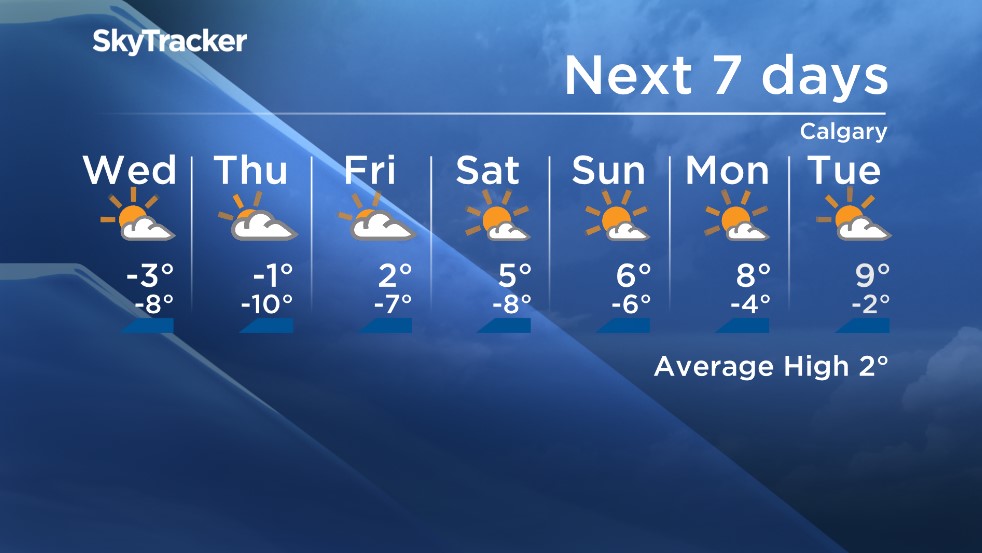A long-awaited and much-anticipated chinook is on the horizon and along with it, concerns about possible flooding as a rapid snowmelt begins in Calgary.

As of Wednesday afternoon temperatures were still below freezing and the only melting was occurring on roads, sidewalks and other dark surfaces.
In the coming days, however, temperatures are expected to climb well above freezing. That, combined with ample sunshine, will likely result in a rapid melt of the large amount of snow that has accumulated over the past several weeks.
Calgary saw a record-breaking amount of snow fall in the first few days of March. That came after three times the normal amount of snow fell during the month of February.
The City of Calgary recommends taking the following steps to help protect your home, property and family:
- Shovel snow away from the foundation of your home and window wells to prevent seepage into your basement
- If you are moving or piling snow, check furnace and exhaust vents to make sure snow and ice are not blocking them. Carbon monoxide can build up within your home as a result
- Ensure your downspouts (eavestroughs) are clear and pointed away from your home/foundation
- Once the snow begins to melt and the storm drain is visible, clear snow away from the storm drain
- If the storm drain is iced over, do not try to remove it yourself. Call 311 and a crew will clear the ice for you. Don’t chip away at ice on storm drains as you may damage it or injure yourself
- If water pools by the storm drain, give it 90 minutes to drain. The City of Calgary has special devices in the storm drains that allow the water to drain slowly and not overload the stormwater system
- If you see pooled water on a roadway, be careful – don’t drive through deep water as you can’t see potentials risks or conditions that might be unsafe
- Check the function of your sump pump
- Clean out your backflow prevention valve, which should be cleaned every six months



Comments